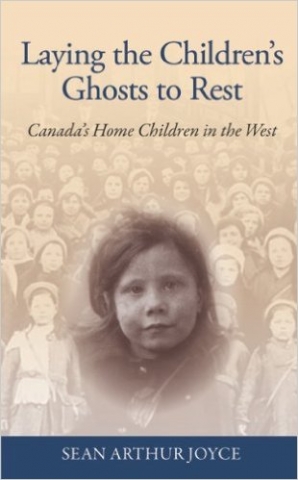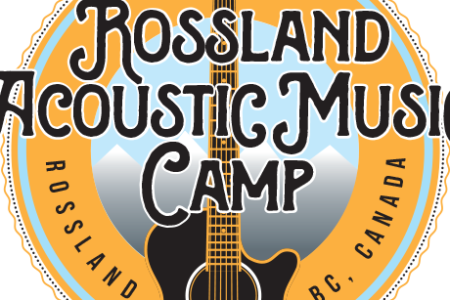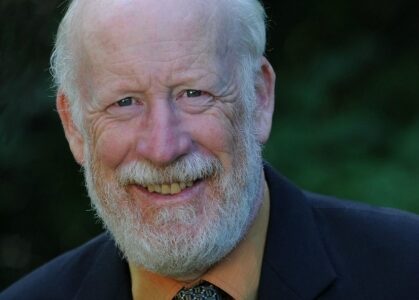Kootenay Author to Read at Rossland Museum
Kootenay author Sean Arthur (“Art”) Joyce will visit the Rossland Museum on October 29, at 6:30 pm in the Museum’s Cominco Theatre to talk about and read from his most recent book. Admission is by donation; books will be available for sale, and the author will be available to sign them.
The book is Laying the Children’s Ghosts to Rest: Canada’s Home Children in the West by Sean Arthur (‘Art’) Joyce, from Hagios Press, Regina, 2014.
What is the biggest ‘open secret’ in Canadian history? Hint: Canada’s most beloved literary icon, Anne of Green Gables, is based on this historical phenomenon. Answer: Between 1869 and 1948, 100,000 children from poor neighbourhoods in Britain were emigrated without parental support (or consent in some cases) to work as indentured labourers in Canada. A further 30,000-plus were emigrated to other British colonies—mainly Australia and New Zealand. So why do we hear so little of our Canadian child immigrants?
Eight years ago, while researching his family tree, Art Joyce made a curious discovery: immigration records showed his paternal grandfather came to Canada with three other boys and a chaperone, but no parents. After consulting a local genealogist he was introduced to the term Home Children. Although it didn’t mean anything to him at the time, his journalistic curiosity was sparked and he decided to investigate.
“The wider story interested me because I realized if this happened in my family, it must have happened in many other Canadian families,” he says. Indeed, an estimated four million people can trace their roots to Home Children—approximately one in eight Canadians.
The practice persisted well into the 20th century, aided by dozens of immigration agencies, many of questionable repute. Though some of the children did well, many were exploited and abused, their new lives hardly an improvement on the ones they left behind. A few Canadian families adopted the children, but most were wanted strictly for their labour. Joyce’s book explores the lesser-known part of the story—what happened to some of these children in Western Canada. The author also explores the impact of this experience on subsequent generations of Canadians.
One of the stories in the book deals with the Roberts family, who were originally from Bristol, England. When the family was pitched into destitution in the 1890s, their father went into the workhouse and their mother was forced to give up her two youngest boys, Walter and William, then only 3 and 4 years old, to the care of Barnardo’s. After being cared for in a boy’s home in the Channel Islands, they were sent to Saskatchewan and Manitoba to work as indentured labourers on farms. William was well cared for but Walter was nearly killed by the farmer who took him on. As an adult, Walter moved to Rossland, where he raised his own family while working at Cominco in Trail. The Roberts family maintained a summer cabin in Lardeau until very recently.
Laying the Children’s Ghosts to Rest chronicles this essential yet seldom-discussed aspect of Canadian history. Joyce’s book combines exhaustive research with memoir and creative nonfiction to paint a vivid picture of life for a Canadian Home Child. Cole Harris, Professor Emeritus of Historical Geography, UBC, calls Laying the Children’s Ghosts to Rest “A significant achievement in Canadian history.” Gary Geddes, an icon of Canadian poetry, says, “Joyce is an excellent writer and has produced an important, engaging book. With a poet’s eye, he often finds the exact image to make his story fly beneath the radar and nest in the ear and eye…”
Joyce previously toured the Columbia Basin in 2011, giving talks in Creston, Cranbrook, Invermere, Golden and Revelstoke, during the research phase of his book, supported by the Columbia Basin Trust through the Columbia Kootenay Cultural Alliance. The book was released in May 2014 and promptly hit the Calgary independent booksellers Top 10 nonfiction list. The author toured Canada with the book, 24 cities and communities from Vancouver Island to the St. Lawrence.
Joyce’s background as a freelance journalist, poet and West Kootenay historian prepared him well to write this book. When he wrote his popular ‘Heritage Beat’ column for the Nelson Daily News (Nelson, BC) from 1996-2000, it was the most popular column in the newspaper. The reason is simple: instead of writing like a history lecturer, Joyce wrote them as stories, often first-person, present tense narratives based on historical characters.
In addition to 25 years of experience as a journalist, Joyce has published two works of local history: A Perfect Childhood—One Hundred Years of Heritage Homes in Nelson and Hanging Fire & Heavy Horses—A History of Public Transit in Nelson. Text from A Perfect Childhood was excerpted on BC’s Knowledge Network TV segment BC Moments.
Joyce has also published three major collections of poetry, The Charlatans of Paradise, Star Seeds, and The Price of Transcendence, all from New Orphic Publishers of Nelson, BC, besides many limited editions.


























